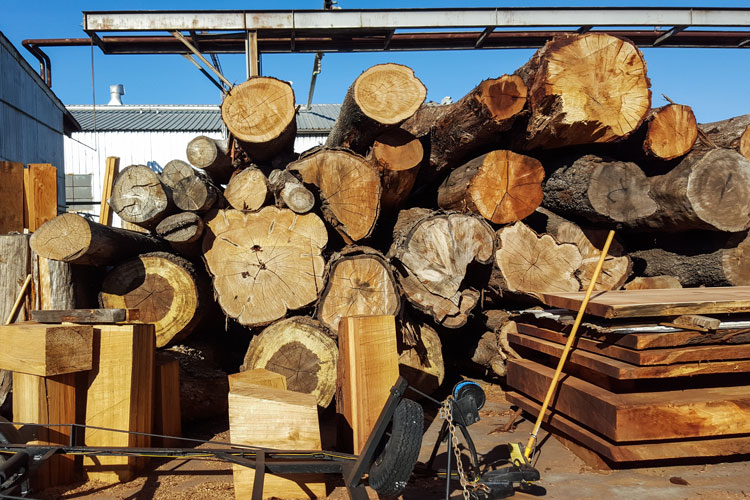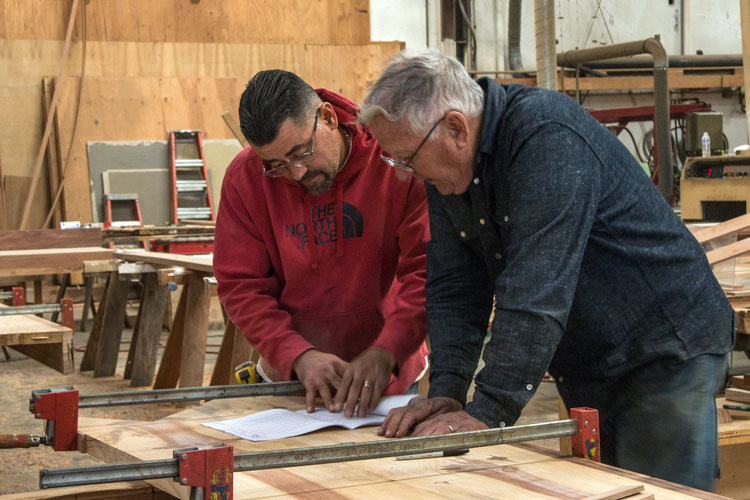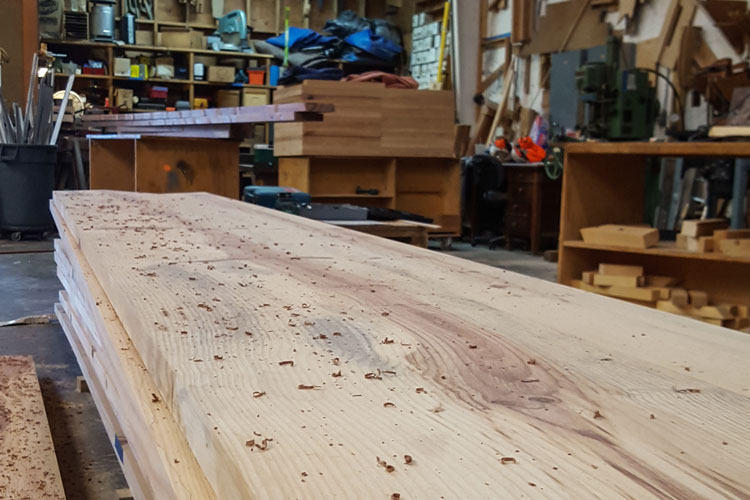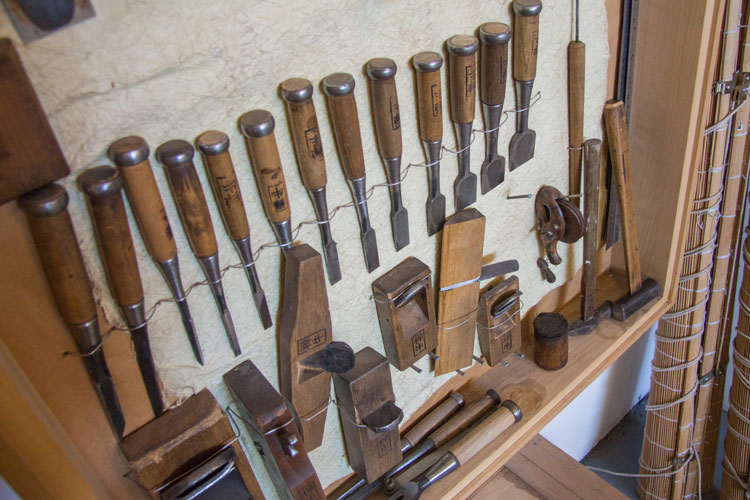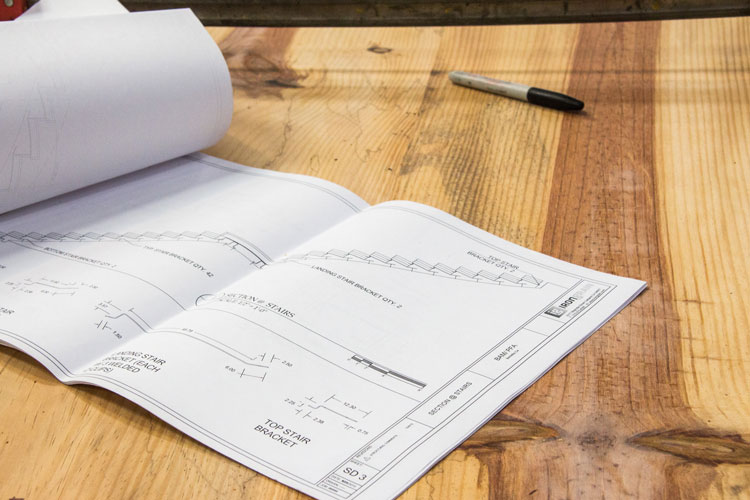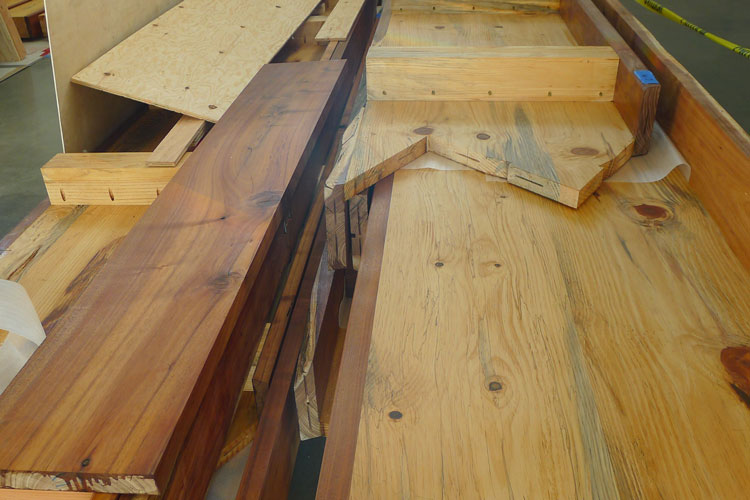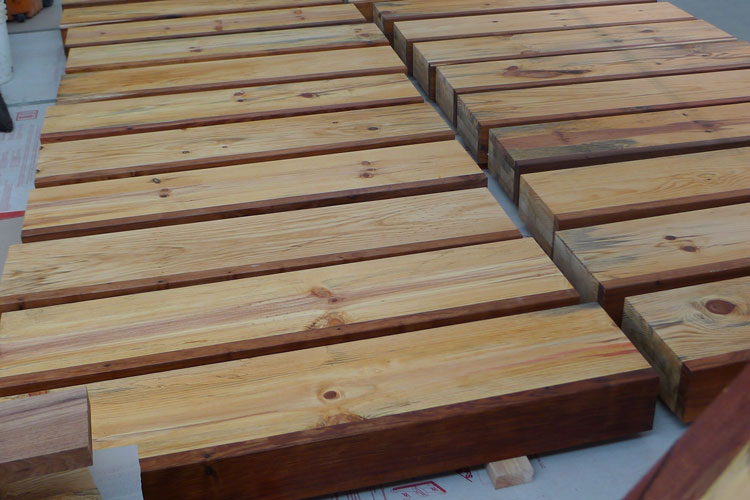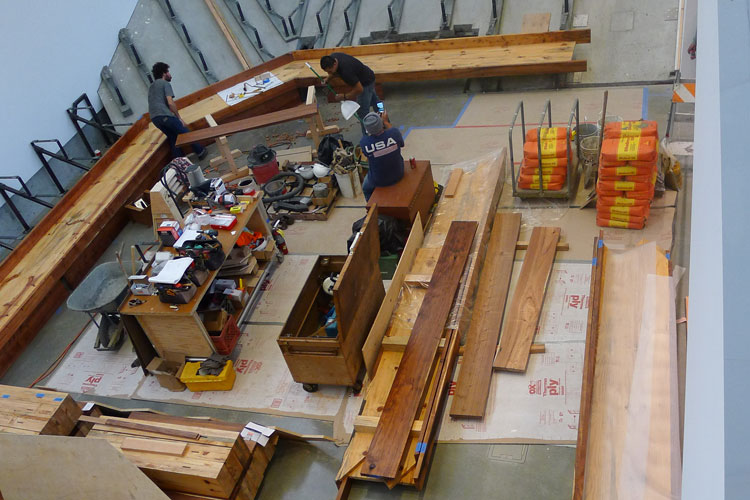Master woodworker, Zen priest designs new furnishings for BAMPFA
Reclaimed trees from the campus and community are being used for new shelving, seating and desks in the soon-to-open Berkeley Art Museum Pacific Film Archive.
December 15, 2015
When the Berkeley Art Museum and Pacific Film Archive reopens at its new downtown location on Jan. 31, the University of California, Berkeley, visual arts center will feature wooden furnishings revived from a previous life by a local master craftsman, ordained Zen Buddhist priest and designer of Buddhist temples.

New benches in the making for the Berkeley Art Museum Pacific Film Archive. (Photo courtesy of BAMPFA.)
“I like trees of all kinds. I like to grow them, trim them, chop them and make wonderful new things with them,” says Paul Discoe, an artisan and student of Japanese culture. Before his meditative work at BAMPFA, he designed the famed Zen centers in Tassajara and Green Gulch, California, as well as temples and even a temple-inspired home for tech mogul and Oracle chief Larry Ellison.
Now Discoe is applying the finishing touches on seating for BAMPFA’s airy new amphitheater, its store shelving and a reception desk, all made out of woods collected from campus and community locations – and bringing a bit more Zen to Berkeley in the process.
The website for his Oakland-based shop, Joinery Structures, notes the eco-friendly business is based around “material, mindfulness and balance.”
“I like turning things that people think of as waste into something beautiful. It’s very rewarding,” says Discoe, who began his relationship with trees as the age of 6 when he asked for a woodworking set for Christmas.
The trees include several Canary Island pine trees salvaged from BAMPFA’s construction at the Center and Oxford streets location prior to construction there, and black acacia, which Discoe described as a cross between rosewood and mahogany.
Discoe says he was surprised when he began to work with the long-needle pine. Initially, he saw them a not-too-impressive, invasive species that is “soft, fluffy, namby-pamby and show-offy.” But once the trees arrived at his West Oakland facility and he looked inside, he found them to be “strong ,with a lot to say aesthetically.”
Discoe says he believes all trees have value and stories to tell, alive or dead.
In Zen Architecture: The Building Process as Practice (2008), Discoe and Alexandra Quinn describe the “crooked cucumber” approach to construction, in which the late Shunryu Suzuki Roshi of the San Francisco Zen Center would pick the odd-looking or misshapen vegetables at a farmers market because if he didn’t, no one would. Discoe’s use of salvaged wood from the urban forest follows the same principle.

With a Jan. 31 opening date for the new BAMPFA, Paul Discoe and his team put the finishing touches on new furnishings made from salvaged wood. (Photo by Josephine Wu.)
Discoe has teamed with Berkeley on projects involving reclaimed wood for more than 20 years. He also designed the Obata Gate, a Japanese mountain-style gate that stands by the entrance to the Japanese Pool at the UC Botanical Garden.
He also is a longtime acquaintance of BAMPFA director Lawrence Rinder, who asked Discoe to share some ideas for the new museum. Also, Discoe’s wife, philanthropist Ann Hatch, is a former member of the museum’s board and an integral part of BAMPFA’s fundraising efforts around its move to the downtown Berkeley arts district.
“We are thrilled to have such an important contribution to our new building from Bay Area legend Paul Discoe,” said Rinder, “Paul is a magician with wood and his work will bring a feeling of elegance and warmth to our pubic gathering areas.”
Discoe says he started conversations with the new museum’s architect of record, EHDD of San Francisco, over a year ago. Finally, the process is nearing a close with the opening soon of the new BAMPFA, an 83,000-square-foot facility designed by the acclaimed New York-based architectural firm Diller Scofidio + Renfro.
BAMPFA’s opening exhibit, “Architecture of Life,” curated by Rinder, will fill all the new building’s gallery spaces with more than 250 artworks, architectural drawings and models, and scientific illustrations reflecting on life experience and dating back more than 2,000 years. Very Zen.
